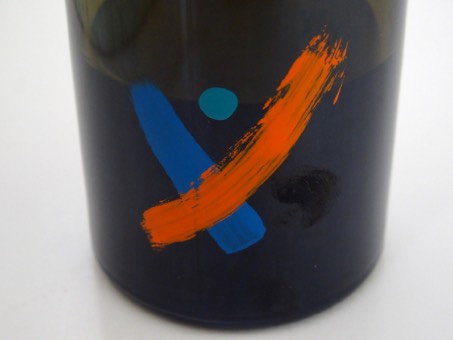|
||||||||||||||||||||||||
Vineyard: Komorebi
Articles mentioning wines produced from this vineyardWineries sourcing from this vineyardReviewed wines produced from this vineyard2016 Matt Taylor Wines Komorebi Vineyard West Sonoma Coast Chardonnay 12.25% alc., pH 3.22, TA 0.85, 160 cases. Harvested before the Sonoma County fire in early October. Clusters are tight and tiny. The wine was pressed whole cluster in a bladder press, fermented and aged in an 18HL concrete egg. Bottling proceeded without sulfur addition after 11 months in concrete sur lie. · Moderately light yellow in color with the slightest haze. Engaging aromas of lemon curd, tarte tatin and salted caramel that are persistent. The flavors replicate the aromas with the addition of orchard fruits and baked green apple. Very appealing with good freshness, a sleek mouthfeel and the slightest salinity. A very tantalizing wine that has well-integrated, crisp acidity and a pleasing lemony finish. Still terrific when tasted the following day from a previously opened and re-corked bottle. The West Sonoma Coast may be the Holy Grail for California Chardonnay. Score: 94. Reviewed March 22, 2020 WINERY » ARTICLE »
 2016 Matt Taylor Wines Komorebi Vineyard West Sonoma Coast Pinot Noir 13.11% alc., pH 3.33, TA 0.84, 230 cases. This vintage provided incredible skin maturity at lower sugar levels, and the stems, despite being neon green in color, were very sweet and ripe and not green in flavor. Hand-harvested and hand-sorted (harvested before the Sonoma County fire in early October). 100% whole cluster in two tanks: one oak and the other concrete. Both tanks were a co-ferment with native yeasts of the three selections in the vineyard. The grapes were in tank 27 days which included a period of extended maceration. The free-run and press wine were kept separate and sent to 228L and 600L barrels (2.5x the size of a normal barrel and having wood staves that are over 1.5x as thick) on the lees for 18 months of aging. 3 months prior to bottling, the wine was moved to tank and received 20 ppm of sulfur. · Light garnet color in the glass. The whole cluster driven nose offers aromas of burnt tobacco, pine sap, sweet pipe smoke and dried leaf elements. Elegantly styled in a light to mid-weight fashion, the wine offers flavors of red cherry and cranberry with a botanical underpinning. Fine-grain, slightly gritty tannins are well proportioned. An arrow of acidity contributes freshness and a piquant finish. More likeable over time in the glass, gaining succulence. Even more enjoyable when tasted the following day from a previously opened and re-corked bottle when the wine displayed more expressive fruit, better acid integration and overall more harmony. Score: 93. Reviewed March 22, 2020 WINERY » ARTICLE »
|
||||||||||||||||||||||||
|
© 2003-2023 Rusty Gaffney MD | Contact the Prince: Prince@PrinceOfPinot.com
| Admin Login
|
||||||||||||||||||||||||


